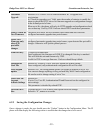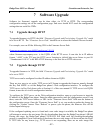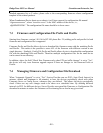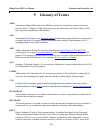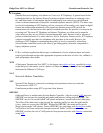
BudgeTone-100 User Manual Grandstream Networks, Inc.
- 50 -
PPPoE
Point-to-Point Protocol over Ethernet, is a network protocol for encapsulating PPP frames in
Ethernet frames. It is used mainly with cable modem and DSL services.
PSTN
Public Switched Telephone Network
i.e. the phone service we use for every ordinary phone call, or called POT (Plain Old
Telephone), or circuit switched network.
RTCP
Real-time Transport Control Protocol, defined in RFC 3550, a sister protocol of the Real-time
Transport Protocol (RTP), It partners RTP in the delivery and packaging of multimedia data,
but does not transport any data itself. It is used periodically to transmit control packets to
participants in a streaming multimedia session. The primary function of RTCP is to provide
feedback on the quality of service being provided by RTP.
RTP
Real-time Transport Protocol defines a standardized packet format for delivering audio and
video over the Internet. It was developed by the Audio-Video Transport Working Group of the
IETF and first published in 1996 as RFC 1889
SDP
Session Description Protocol, is a format for describing streaming media initialization
parameters. It has been published by the IETF as RFC 2327.
SIP
Session Initiation Protocol, An IP telephony signaling protocol developed by the IETF
(RFC3261). SIP is a text-based protocol suitable for integrated voice-data applications. SIP is
designed for voice transmission and uses fewer resources and is considerably less complex than
H.323.
All Grandstream products are SIP based
STUN
Simple Traversal of UDP over NATs, is a network protocol
allowing clients behind NAT (or
multiple NATs) to find out its public address, the type of NAT it is behind and the internet side
port associated by the NAT with a particular local port. This information is used to set up UDP
communication between two hosts that are both behind NAT routers. The protocol is defined in
RFC 3489
. STUN will usually work good with non-symmetric NAT routers.
TCP
Transmission Control Protocol, is one of the core protocols of the Internet protocol suite. Using
TCP, applications on networked hosts can create connections to one another, over which they
can exchange data or packets. The protocol guarantees reliable and in-order delivery of sender
to receiver data.






